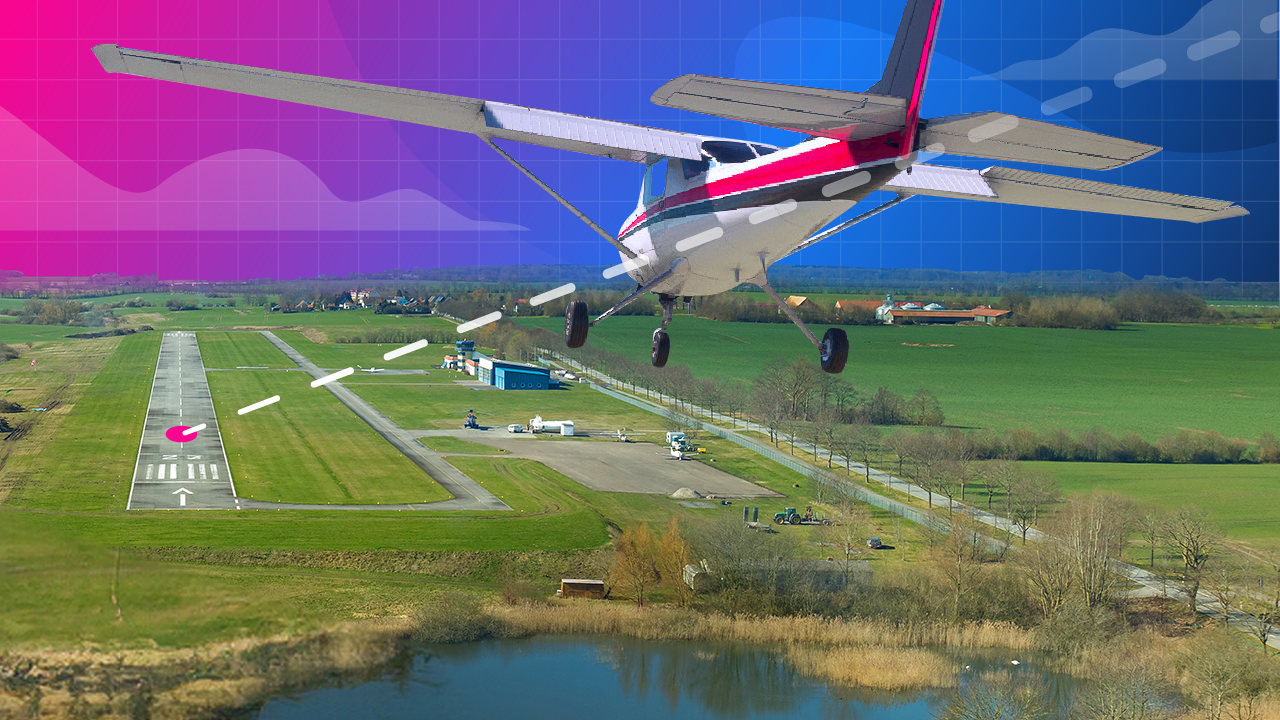At airshows, you might be amazed by the maneuvers that aerobatic aircraft perform.
One such maneuver is the stall turn, more commonly referred to as the hammerhead.
Let’s learn more about this maneuver and what makes it so unique.
Key Takeaways
- A stall turn, or hammerhead, is an aerobatic maneuver.
- It consists of a vertical climb, a rapid turn of the vertical axis, and a vertical descent.
- A properly executed stall turn requires awareness of left turning tendencies and airspeed.
What Is a Stall Turn?
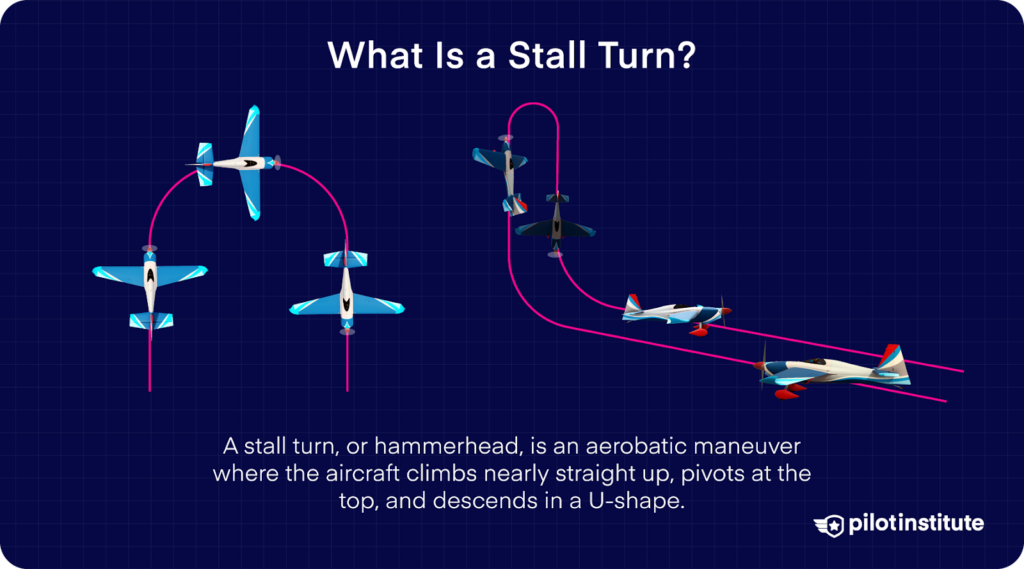
A stall turn, also known as a hammerhead, involves flying the aircraft nearly straight up, performing a tight, pivoting turn at the top, and then flying back down, essentially creating a U-shape path in the sky.
The stall turn consists of three main parts.
First, you’ll take the aircraft into an upward climb, known as the up-line.
Once the airplane has reached a point where it nearly stalls or loses lift, you’ll initiate a pivot or turn.
Lastly, you control the aircraft into a downward path, called the down-line, essentially retracing your upward path in reverse.
A well-executed stall turn demonstrates proficiency in managing airspeed, controlling attitude, and timing.
How to Execute a Stall Turn
To execute a stall turn, the pilot enters a vertical climb with full power, which will cause the airspeed to drop.
Eventually, the aircraft will slow down to a point where upward vertical motion is zero.
Just prior to reaching a point where the aircraft stops all upward motion, the pilot applies full rudder input to yaw the aircraft and point the nose straight toward the ground.
The pilot then begins to pull up on the elevator and recover the aircraft to the same altitude as the entry, pointing in the opposite direction from the starting direction.
Timely recovery from the down-line is paramount to prevent excessive loss of altitude and ensure the aircraft returns to stable, level flight efficiently.
Delayed or sluggish recovery inputs can exacerbate control difficulties and elevate risk during the maneuver.
Why Is a Stall Turn Called the “Hammerhead”?
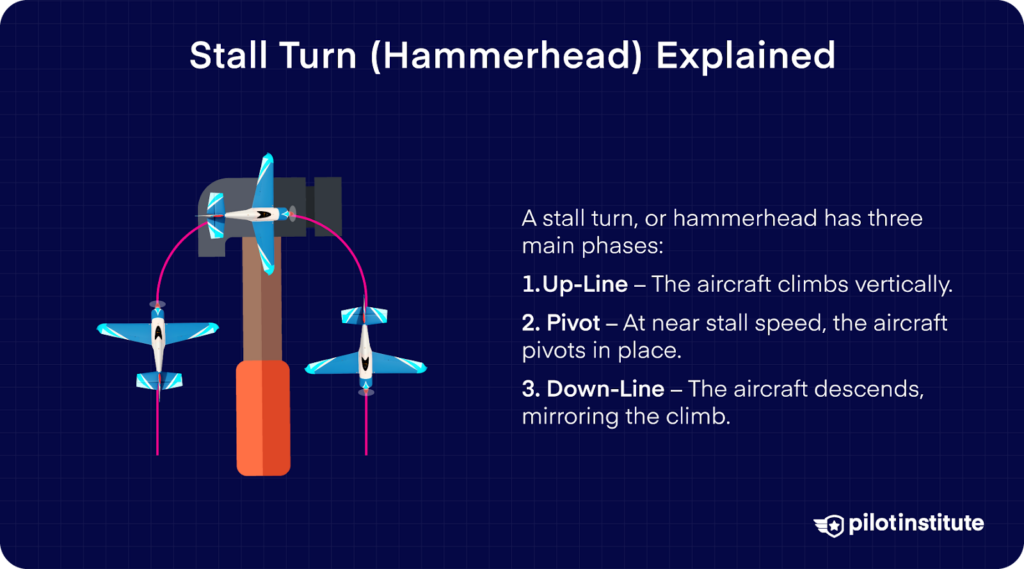
The stall turn is more commonly referred to as the hammerhead.
Why?
Visualize a hammer for a moment. The long, straight handle and the abrupt, 90-degree turn where it meets the head resemble the path an aircraft takes during the stall turn maneuver.
The initial vertical climb represents the lengthy handle of the hammer, while the sharp pivot and subsequent descent mimic the abrupt angle and structure of the hammer’s head.
Elements of a Stall Turn
Left Turning Tendencies
The four left-turning tendencies are very prominent in this maneuver.
This is because the aircraft’s airspeed is slow, and the engine is at the highest power setting.
If the pilot does not counter the effects of the left-turning tendencies, the maneuver will not be sharp and precise with straight smoke lines.
A properly coordinated stall turn has straight vertical lines when the aircraft is going up and down in this maneuver.
Control Surface Effectiveness
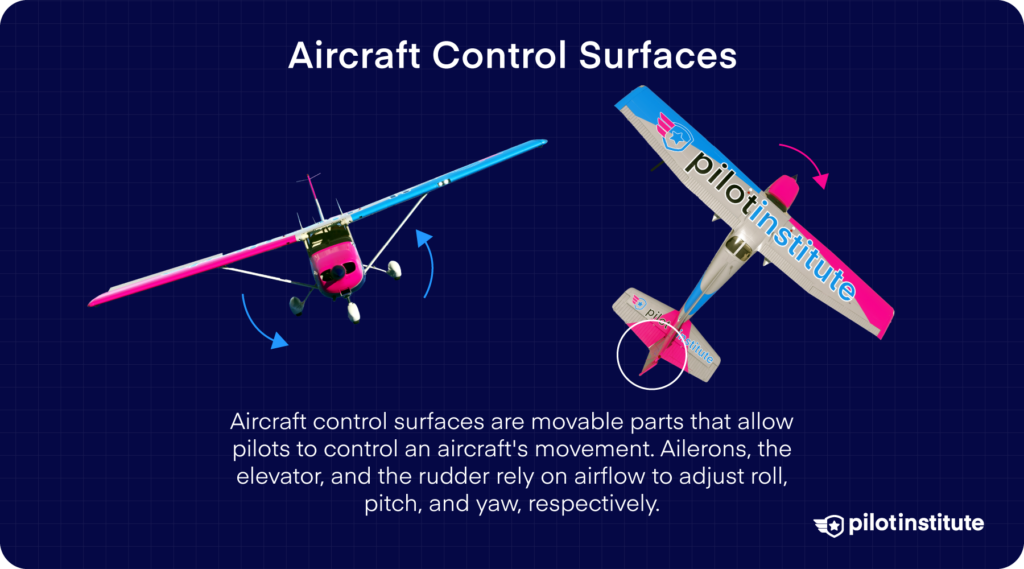
Control surfaces such as the aileron, elevator, and rudder require airflow over the surface to change the aircraft’s roll, pitch, and yaw, respectively.
Because of this, the sharp, yawing turn at the top of the maneuver requires some airspeed in order to work.
The pilot must execute the rudder kick at the right moment in order to properly execute the stall turn.
The right moment is defined by the amount of airspeed remaining.
If the aircraft is too fast at the start of the yaw, the turn would not be sharp – also known as “bridging” due to the wide arch that is drawn with the smoke.
If the aircraft is too slow when the pilot begins the yaw, the aircraft might not respond to the pilot’s control inputs.
When the thrust is not enough to overcome the force of gravity, the aircraft slides backward and eventually flips to point the nose toward the ground, known as a “tailslide.”
Frequently Asked Questions
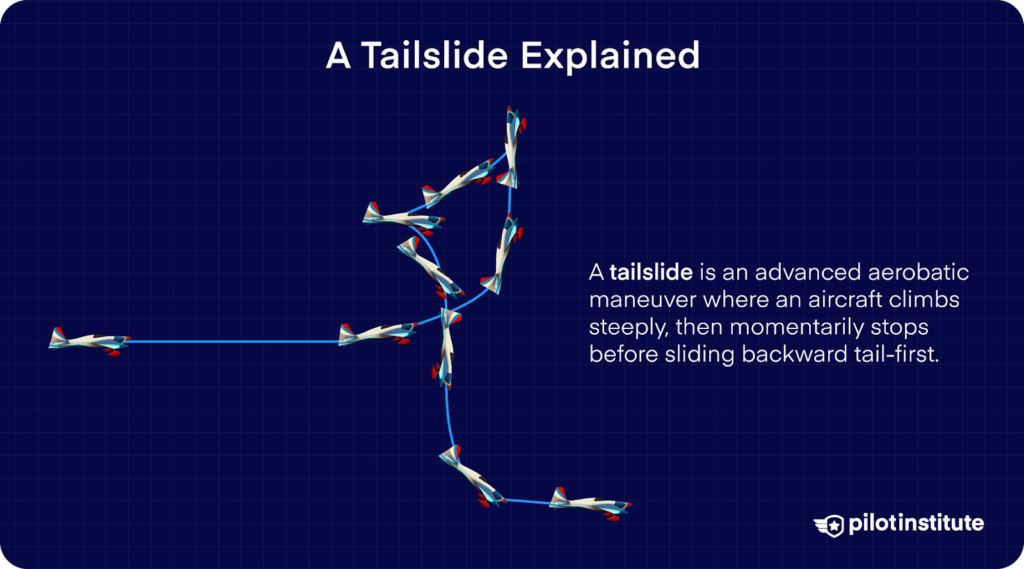
- What is a hammerhead stall?
A hammerhead(or stall turn) is an aerobatic maneuver where the aircraft climbs almost straight up, pivots at the top, and then descends down in a U-shape. The aircraft doesn’t actually stall because it pivots before it loses too much lift.
- What is a stall maneuver?
A stall maneuver is when you slow the aircraft until the wings lose lift. Pilots do this in training, recovery practice, and aerobatics.
- How does a stall turn into a spin?
If one wing stalls more than the other, then the aircraft enters an uncontrolled roll, which leads it into a spin.
Conclusion
While you have learned the elements of a stall turn, this maneuver should only be done in an appropriate aerobatic-rated aircraft.
This maneuver demonstrates the pilot’s excellent control over their aircraft and is a compulsory maneuver in aerobatic competitions.

